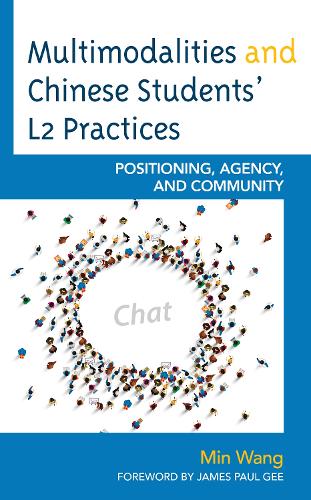
Multimodalities and Chinese Students L2 Practices: Positioning, Agency, and Community
(Hardback)
Publishing Details
Multimodalities and Chinese Students L2 Practices: Positioning, Agency, and Community
By (Author) Min Wang
Foreword by James Paul Gee
Bloomsbury Publishing PLC
Lexington Books
13th March 2020
United States
Classifications
Professional and Scholarly
Non Fiction
Language teaching and learning
Asian history
Teaching of a specific subject
Educational: Language, literature and literacy
428.24951
Physical Properties
Hardback
180
Width 160mm, Height 228mm, Spine 16mm
413g
Description
Multimodalities and Chinese Students' L2 Practices: Identity, Community, and Literacy explores the complex relations and interactions among multimodality, positioning, and agency in increasingly digitized, multilingual, and multicultural contexts. Min Wang uses interview narratives, WeChat exchanges, and class observations and field notes of three Chinese international students lived experiences of English learning and use in their everyday environments to show that these L2 learners recognized, appreciated, and appropriated affordances of multiple modes and digital tools for their L2 literacies practices. Through these tools and modes, they positioned themselves as confident, able, and competent L2 users, but sometimes also struggling and ambivalent. The practice of meaning-making, remaking, designing, and redesigning demonstrated their agency as L2 learners, which motivated and inspired them to (re)produce and (re)create meanings through discourses for the purpose of presenting desired and anticipated positionings. Positioned as cultural and social beings, these L2 learners presented their self-understandings and self-representations through symbolic and material artifacts, interactions with local and non-local people, and engagement in WeChat discussions and ELI learning. To obtain multimembership, they assumed rights, obligations, and expectations in order to become legitimate community members. In the process of becoming, their agency was promoted, negotiated, or sometimes limited by micro-social structures and ongoing interactions.
Reviews
"Min Wangs fine-grained case study of three Chinese learners of English in the USA provides much insight into the way international students navigate complex transnational identities. A timely and important contribution to our understanding of language learning in the digital age."
-- Bonny Norton, University of British Columbia, Canada"Min Wang has conducted a careful analysis of the positioning moves and agentive actions of three Chinese students learning English in a university-based language institute in the U.S. By examining multiple dimensions of these students positioning work across time, through varied modalities, and in different locationsboth physical and virtual, Wang provides a powerful demonstration of how identity, agency and language learning are interdependent phenomena. Applied linguists and other scholars will welcome this important contribution to the growing body of research using holistic, ecological approaches when examining agency and language learning." -- Elizabeth Miller, University of North Carolina
"In this book, the reader will see how young adult L2 learners develop multimodal and multilingual literacies and navigate their positional identities as a capable community member in a social context. This is an excellent contribution to the second language field with important theoretical and practical insights." -- Bogum Yoon, State University of New York at Binghamton
Author Bio
Min Wang is assistant professor of TESOL in the department of education specialties at St. Johns University.
